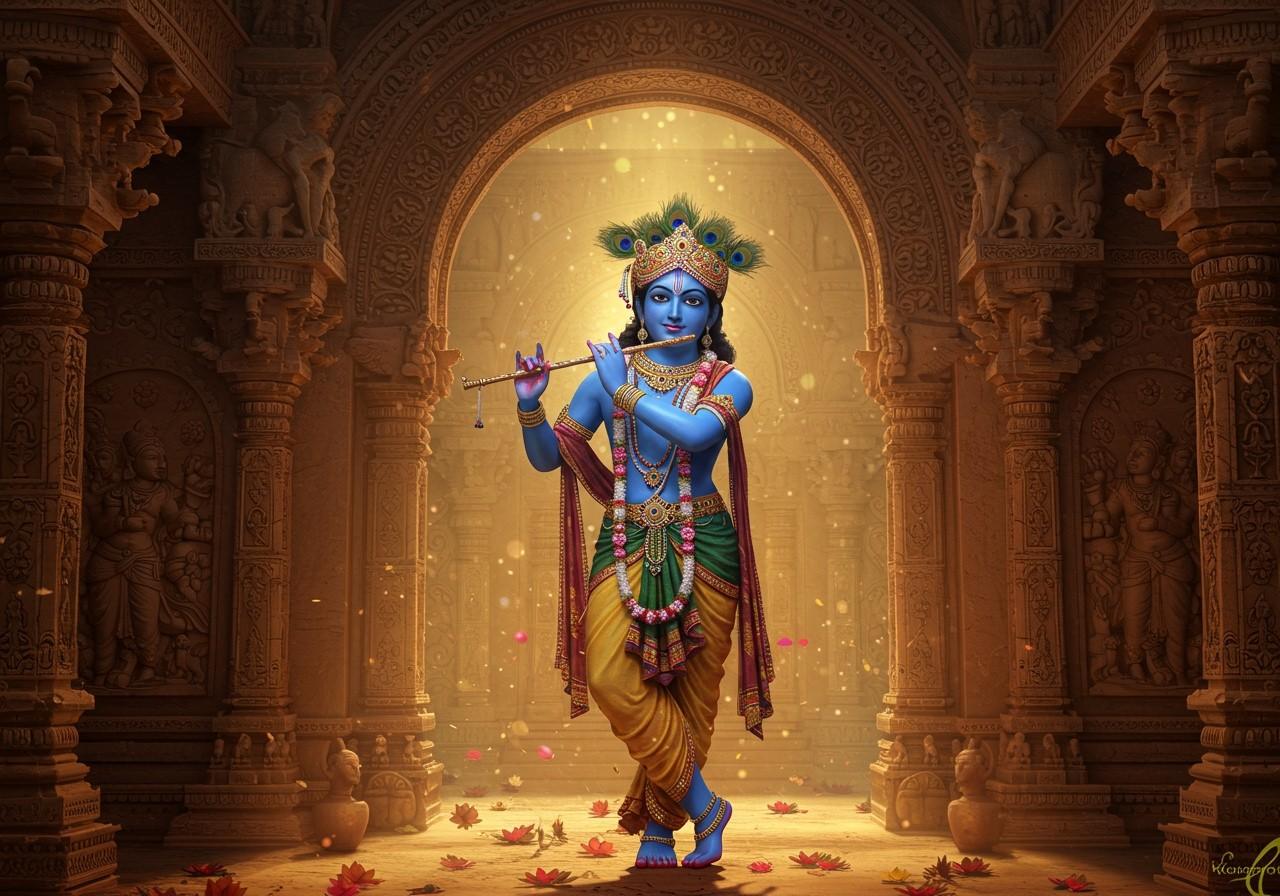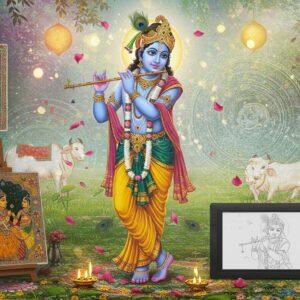
Mathura, located in Uttar Pradesh, India, is renowned for its rich cultural heritage and spiritual importance. As the birthplace of Lord Krishna, it holds a special place in Hinduism, a connection deeply reflected in its art. This article delves into the spiritual significance and divine meaning of Mathura art, examining its unique symbolism and influence on religious practices and cultural traditions in India.
Historical Context of Mathura Art
Mathura’s artistic heritage traces back to ancient times, originating in the 2nd century BCE, with roots in the Buddhist and Jain periods before flourishing as a hub for Hindu art during the Kushān and Gupta periods. Its development spans various historical periods:
- Maurya Dynasty (322-185 BCE): This period laid the groundwork for Mathura’s artistic tradition, though few examples survive.
- Shunga Dynasty (185-73 BCE): A period known for its patronage of the arts, including early forms of Mathura sculpture.
- Kushan Dynasty (30-375 CE): Mathura art truly blossomed under Kushan rule, with the development of distinct sculptural styles influenced by Hellenistic and Indian traditions, contributing to the cult image of the Buddha.
- Gupta Period (320-550 CE): This era saw a refinement of Mathura’s artistic style, focusing on Hindu iconography and themes, particularly related to Lord Krishna.
Mathura served as a cultural crossroads, blending Greek, Persian, and Central Asian influences with indigenous Indian styles, resulting in a unique artistic tradition that significantly contributed to religious iconography, especially for the Buddha. The Mathura school of art holds a prominent place in Indian art history. Despite these various influences, Mathura’s artists maintained a distinct Indian identity, employing symbolic elements to communicate spiritual meanings.
Symbolism in Mathura Art
Mathura art is characterized by rich symbolism, conveying profound spiritual and religious meaning. Key elements include:
- Divine Figures: Representations of Lord Krishna, Buddha, and Jain Tirthankaras are central to Mathura art, showcasing the region’s religious diversity.
- Gestures (Mudras) & Postures (Asanas): Specific mudras and asanas convey distinct spiritual messages, adding layers of meaning to the depictions.
- Iconographic Elements: Symbols like the chakra (wheel), lotus, and dharma wheel appear frequently in sculptures and paintings, each holding specific religious significance.
- Celestial Beings: Depictions of yakshas and yakshinis, nature spirits, add a mystical dimension to the artwork.
- Sacred Geometry & Patterns: The use of geometric patterns and sacred proportions enhances the spiritual resonance of the art.
Religious Significance and Practices
Mathura art is deeply intertwined with religious practices and rituals, serving as a medium for devotion and worship and playing a central role in temple rituals and festivals:
- Major Hindu Festivals: Mathura art is integral to festivals like Janmashtami (celebrating Lord Krishna’s birth) and Holi, with depictions of these events commonly found in various art forms.
- Home Altars & Devotional Items: Smaller sculptures, paintings, and ritual objects are used in personal and domestic worship, bringing the sacred into the home.
- Pilgrimage to Mathura: The city itself is a pilgrimage site, and the presence of Mathura art in temples and sacred spaces enhances the spiritual experience for devotees.
- Classical Dances: Many classical Indian dance forms, particularly those originating in the region, depict episodes from Lord Krishna’s life, drawing inspiration from Mathura art.
Mathura Art and Craft
Mathura art is celebrated for its craftsmanship and aesthetic beauty. Various forms include:
- Sculpture: Known for its intricate detail and expressive figures, primarily using red sandstone.
- Painting: Traditional Pichwai paintings, depicting Shrinathji (a form of Krishna), are a prominent example.
- Terracotta: Used for creating votive figures, plaques, and other decorative items.
- Metalwork: Bronze and brass sculptures of deities are common, showcasing skilled metalworking techniques.
Mathura artisans utilize materials like red sandstone, clay, and bronze. The intricate detailing and fine craftsmanship make Mathura art highly valued by collectors.
Poojn.in: Connecting You with Mathura’s Spiritual Art
At Poojn.in, we offer a curated selection of authentic Mathura art and related items, allowing you to bring the divine presence of Lord Krishna into your home. Explore our collection:
- Radha Krishna Bigraha: This exquisite marble dust sculpture depicts the divine couple, Radha and Krishna.
- Brass Radha Krishna Murti: A beautifully crafted brass idol of Radha and Krishna, perfect for your home altar.
- Laddu Gopal Brass Murti: A charming brass idol of Laddu Gopal (child Krishna), symbolizing his playful nature.
We source our products directly from artisans, ensuring authenticity and quality. Visit Poojn.in for more details, including product descriptions and specifications. Our customer support is available for any assistance.
Conclusion
Mathura art is more than just aesthetically pleasing; it’s a profound expression of spiritual and religious devotion. From intricate Krishna sculptures to sacred symbols, it reflects a deep connection to divine traditions, bridging the ancient and contemporary. Appreciating Mathura art means honoring India’s rich cultural and spiritual heritage. By bringing these pieces into our lives, especially through online platforms like Poojn.in, we continue to cherish and uphold the spiritual significance of Mathura art.


